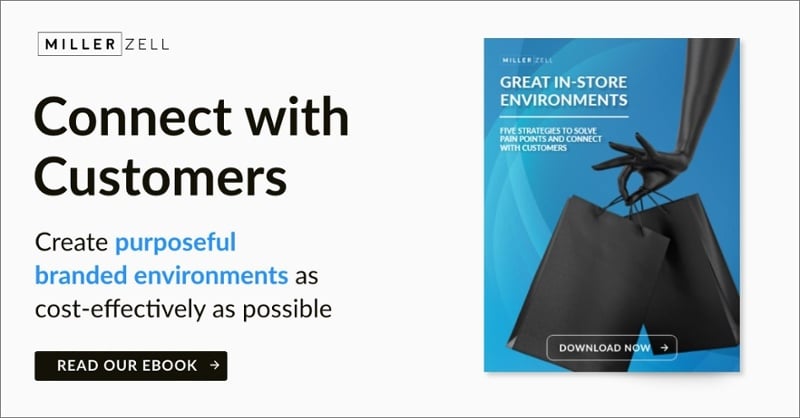The Secret to Successful Large-Scale Rollouts
The secret to effectively executing large-scale rollouts for branded environments is:
1. Great planning; 2. Great communication; 3. Great attention to detail.
That’s it. Sounds simple. Only if it were.
Great planning requires diverse expertise that encompasses every element of campaign execution, whether it’s for 100 or 5,000 store environments.
It includes, for example, highly detailed store surveys that might inform a grocery chain that — among its thousands of locations — it features 30 different types of meat coolers. And, subsequently, identify and accommodate customized alterations in design development.
Great planning includes strategic kit packing of fixture and décor elements, aiming both for ease of build and minimized shipping costs. This not only considers the installation process, it also plans for how kit-packed boxes will be organized in delivery trucks and how and when they will be transferred into stores.
Great communication means a single point of contact who can provide updates, troubleshooting and solutions. It also fosters a problem-solving chain of command, from installers to install managers to project managers, who then know where to take issues to deliver precise and efficient solutions.
Understand procurement and logistical details before you start
Details? Here are some to monitor:
- Be informed and aware of the whole cost from design through installation.
- Understand the ideal material selections, as well as the fixture assembly methods and end-user ergonomics that best fit your environment, on-site resources and budget.
- Insist on seeing and experiencing prototypes so you can give feedback before moving to procurement, production and adoption at scale.
One-size-fits-all does not work when scaling programs for branded environments. Stores are like snowflakes. While there are commonalities to be incorporated across the program, fully understanding the diversity of footprints helps ensure that in-store dates are met and quality is maintained.
Executing a large-scale rollout efficiently, precisely and on budget
Creating engaging, purposeful and customer-centric environments is a complex undertaking that starts with research and strategy and ends once installation is completed at scale. It’s difficult to manage the entire process when working with multiple companies that specialize in one or two areas but not others.

Rollout preparation starts early in the process, even during design ideation. Anticipate friction before it happens and understand the possibility of evolving needs. Look at process, design and production through the same value-engineering lens. How can you maintain or improve function while reducing cost?
- Secure program managers to ensure coordination, trackability and transparency into the full program.
- Focus on identifying store-specific demands, creating cohesion across multi-unit projects and continually managing your needs as conditions change and your brand evolves.
- Consider rollout-ready, clearly delineated kits of parts that will accommodate a range of footprints and investment levels.
- Design a proven installation protocol guided by project managers who collaborate with design development, procurement, production, warehousing and boots-on-the-ground quality control.
Investigate the value of end-to-end services
Client partners who offer end-to-end services can help, particularly when there’s more work than people.
Program managers should serve as an extension of your team, whether working full-time or part-time, on-site or off-site. Flexibility that helps them align with your internal dynamics allows them to run alongside and iterate on demand.
Finally, a high-performing online logistics management system that gives you 24/7 access to your project will prove valuable, particularly when it provides accessibility and visibility into project status, store attributes, digital assets, photography and merchandising placement.
Great planning, communication and attention to details during large-scale rollouts aren’t easy to establish and maintain. But the rewards for optimized environmental design and in-store execution are high — great customer experiences, increased brand loyalty and ROI.
